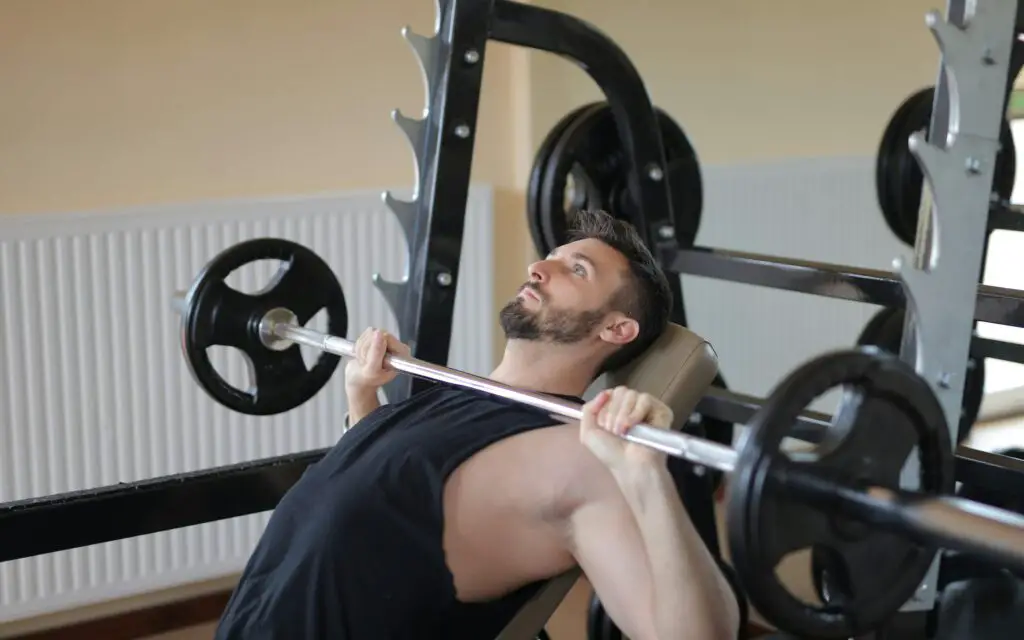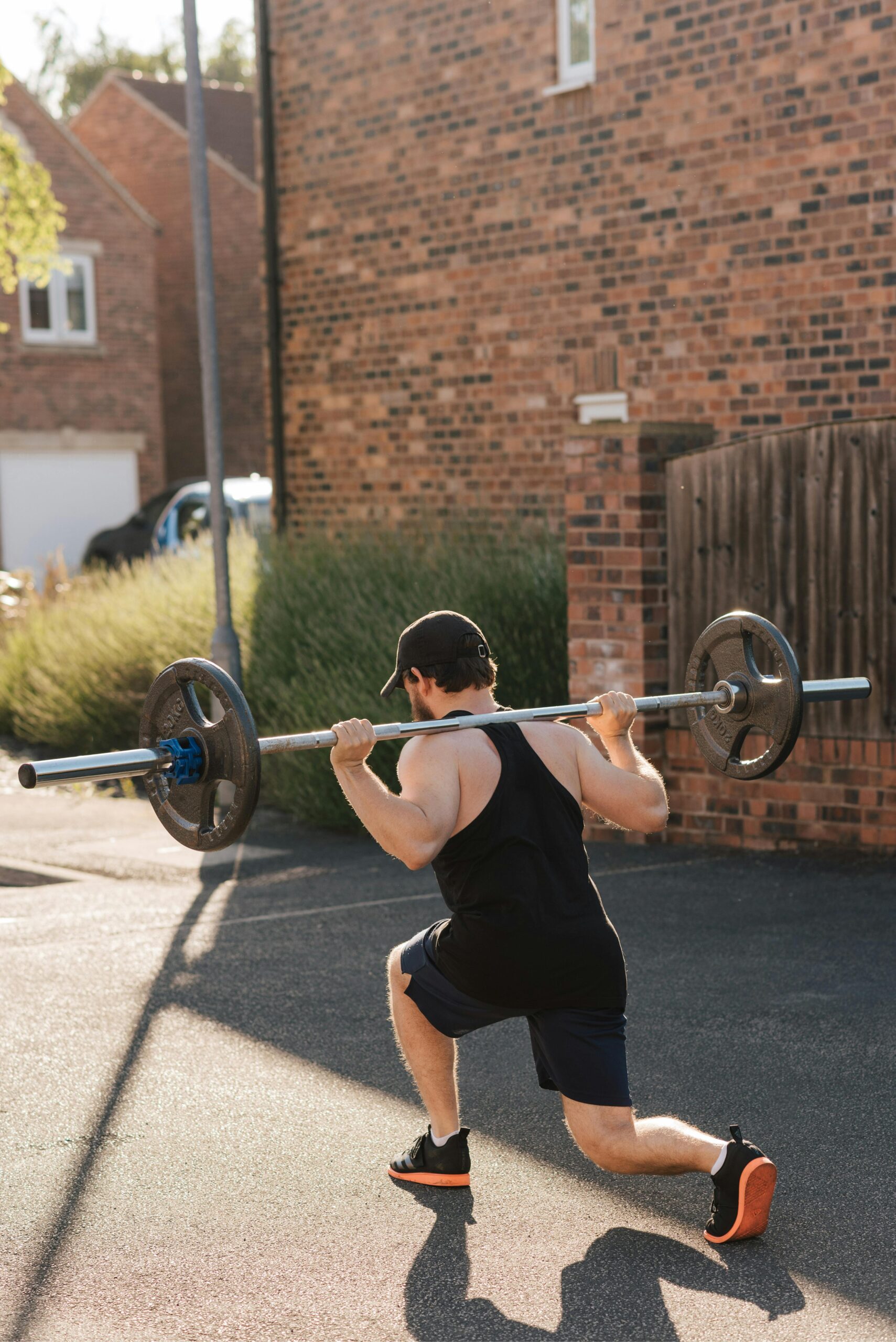Exercise is a common option among men wanting to gain muscle and strength . Whether you’re new to exercise or a professional gym-goer, you must grasp muscle gain principles and include productive exercises in your training schedule. This article will provide all the details you need to start productively gaining muscles.
Hypertrophy, another term for muscle development , is the result of small ruptures in the muscle fibers caused by tension during exercise. These ruptures are cured through a healthy diet and rest, giving rise to bigger and more powerful muscles. Exercise is essential to this process because it promotes the growth and flexibility of muscles.

Types of Exercises for Muscle Gain
Indeed! The specific exercises must be included in your training schedule to enhance strength and muscle growth regarding muscle gain. More details regarding the kinds of workouts that are especially beneficial for gaining muscle may be found here:
Resistance Training:
Resistance training is the fundamental component of every plan aimed at gaining muscle mass. This exercise stimulates your muscles through external resistance, such as body weight, resistance bands, or weights. Your muscles will strengthen and adapt to your higher resistance level, achieved by gradually stressing them.
Compound Exercises:
Compound exercises are multi-joint exercises that target many muscle groups equally. Because they let you engage many muscles in one movement and lift greater weights, these exercises are quite effective for building muscle. Typical compound exercises consist of the following:
Squats
A compound exercise, squats engage the quadriceps, hamstrings, and glutes in the lower body. Additionally, they involve the core muscles to maintain balance and stability.

Deadlifts
The back chain, which involves the hamstrings, glutes, and lower back, is the primary target of deadlifts, a compound exercise. For stability, they additionally engage the upper body and core muscles.
Table Press
The back bench press is a compound workout that targets the head, biceps, and chests. The bench press is a compound workout that targets the arm muscles, shoulders, and chests. It is an excellent way to build muscle and strengthen your upper body.
Pull-ups
A physical exercise that involves the forearms, biceps, and back is the pull-up. They work incredibly well to form and strengthen the muscles in the upper body.
Shoulder Press
The triceps and shoulder deltoid muscles are the primary objectives of the shoulder press. It’s a great workout to improve the size and strength of your shoulders.
Isolation Exercises:
Exercises that concentrate on a particular muscle group include only one joint being engaged in exercise. Isolation exercises are useful for healing muscle imbalances and targeting particular muscles, whereas compound exercises are important for increasing general strength and muscle growth. Typical isolation exercises consist of the following:
Bicep Curls
Bicep curls target the biceps alone and are a great strategy to increase the size and strength of your arms. Dumbbells, barbells, or resistance bands can be used for these exercises.

Triceps Extensions
Triceps extensions are a great physical workout for developing arm muscles and shape since they specifically target the triceps.
Leg Curls
We are strengthening the back leg muscles and concentrating on the hamstring muscles.
Lateral Raises
We are improving shoulder strength by focusing on the deltoid muscles of the shoulders.
Cardiovascular Exercises:
Cardio can help with muscle gain, even though it is usually related to calorie burning and cardiovascular health improvements. Disadvantaged to moderately intense cardiovascular activities, such as walking quickly, cycling, or swimming, can improve blood flow to the muscles, accelerating up muscle recovery and improving your general health. To avoid reduced muscle growth, it is necessary to find a balance and give resistance exercise primary priority in order to gain muscle mass.
You can get the best results in terms of strength, size, and general fitness by including compound exercises, isolation exercises, and cardiovascular training in your training schedule. Furthermore, to keep stretching your muscles to promote growth over time, you must gradually increase the weight, repetitions of movements, or intensity of your workouts in order to constantly stress them.
Workout Routine for Muscle Gain
Split Routines
By splitting routines, you work on different muscle groups each day. You can, for instance, concentrate on your triceps and chest on one day, your back and biceps the next, and your legs and shoulders the day after that.
Full-Body Workouts
In a single session, all the primary muscle groups are engaged during full-body workouts. For people who are new to the gym or have little time to dedicate to it, this is the best technique.

Rest and Recovery
Muscle gain and development depend on rest and rehabilitation. To give your muscles enough time to improve completely from an exercise, try to get enough sleep every night and include rest days in your schedule.
Supplements for Muscle Growth
Supplements can boost muscle growth in addition to your diet and exercise routine while they are not needed.
Protein Supplements
Plant-based protein powders, casein protein, and whey protein can all help you enhance your protein consumption and aid in muscle gain.
Catechin
Muscle ATP generation is aided by a chemical that occurs naturally called the protein creatine, which leads to increased muscle strength and growth.
Branched-Chain Amino Acids (BCAAs)
Essential amino acids, known as BCAAs, are vital for the synthesis of muscle protein. Preventing muscle breakdown and accelerating recovery can be achieved by taking BCAA supplements either before or during exercise.
Benefits of Men’s Exercise to Gain Muscles
Improved Strength and Endurance
Regular strength training enhances muscle power and endurance. This helps lift heavier weights and improves overall physical performance in daily activities and sports.
Improved Insulin Sensitivity
Resistance training helps enhance insulin sensitivity, which can lessen the incidence of type 2 diabetes and aid in blood sugar management.
Boosted Testosterone Levels
Regular exercise, especially weightlifting, raises testosterone levels in the body naturally. Increased muscle mass, a happier mood, and vitality are all linked to higher testosterone levels.
Increased Longevity
Maintaining muscle mass and engaging in regular exercise are associated with longer lifespans. They raise the quality of life as you age, lower the risk of chronic diseases, and improve general health.
Importance of Rest and Recovery
Muscle Repair and Growth
Muscle development and change are the results of the body healing small breaks in the muscle fibers caused by training during rest and recovery periods.
Overtraining Risks
Overtraining raises the risk of injury and may retard the growth of muscle. Pay attention to your body’s needs and give yourself enough time off in between sessions to avoid overtraining.
Tracking Progress
Setting Goals
Establish specific, precise objectives for your muscle-building process, such as growing your muscles’ size or strength.
Measuring Strength and Muscle Gains
By recording your workouts in a notebook, measuring frequently, and reviewing your objectives from time to time, you can monitor your progress.
Common Mistakes to Avoid
Neglecting Proper Form:
Exercises performed with inadequate technique can decrease the stimulation of muscles and raise the risk of injury. Always keep good form and technique initially, prioritising careful moves and the entire range of motion.
Overtraining:
Although you need to be constant to grow muscle, excessive training can impede your progress and increase your risk of fatigue or damage. Between workouts, give yourself enough time to relax and recover, and pay attention to your own body’s signals to prevent stressing yourself.
Ignoring Nutrition:
For the purpose of promoting muscle growth and rehabilitation, nutrition is essential. Make sure you’re taking in enough calories and macronutrients to support muscle gain during your exercises, especially protein. Ignoring adequate nourishment can slow your progress and stress you out.
Not Tracking Progress:
Figuring out if your efforts are paying off can be difficult if you fail to maintain updated on your progress. Maintain a workout log to chart your measurements and strength improvements over time, as well as your lifts, sets, and reps. Because you can observe real improvement, you can stay motivated and make necessary adjustments to your training schedule.
Skipping Rest Days:
Muscle development and maintenance require rest and rehabilitation. Stay away from the temptation to push yourself too hard every day, and include relaxation days in your training schedule. This keeps you from overtraining and lets your muscles heal completely.
Focusing Solely on Isolation Exercises:
Although isolation workouts are useful in muscle-building processes, concentrating only on them may hinder your overall development. Your training plan should start with compound exercises since they let you work more muscle groups at once and lift larger weights.
Lack of Consistency:
It takes persistence as well as patience to build muscle. Stay away from often skipping workouts or switching programs. For long-lasting effects, follow an organized training schedule and maintain consistency in your exercise and diet.
Neglecting Recovery Strategies:
Recovery techniques like foam rolling, stretching, and getting enough sleep can be added to rest days to improve muscle recovery and lower the chance of injury. Make rehabilitation a top priority as it concerns your exercise schedule.
conclusion
Conclusively, for the best possible muscle gain, it needs to include a comprehensive approach to training, food, and rehabilitation. You can efficiently promote muscular growth and strength increases by concentrating on compound workouts that hit several muscle groups, keeping perfect technique, and gradually stressing your muscles over time. Further supporting muscle regeneration and recovery is making sure you are getting enough nourishment, which includes eating enough protein and being hydrated.
